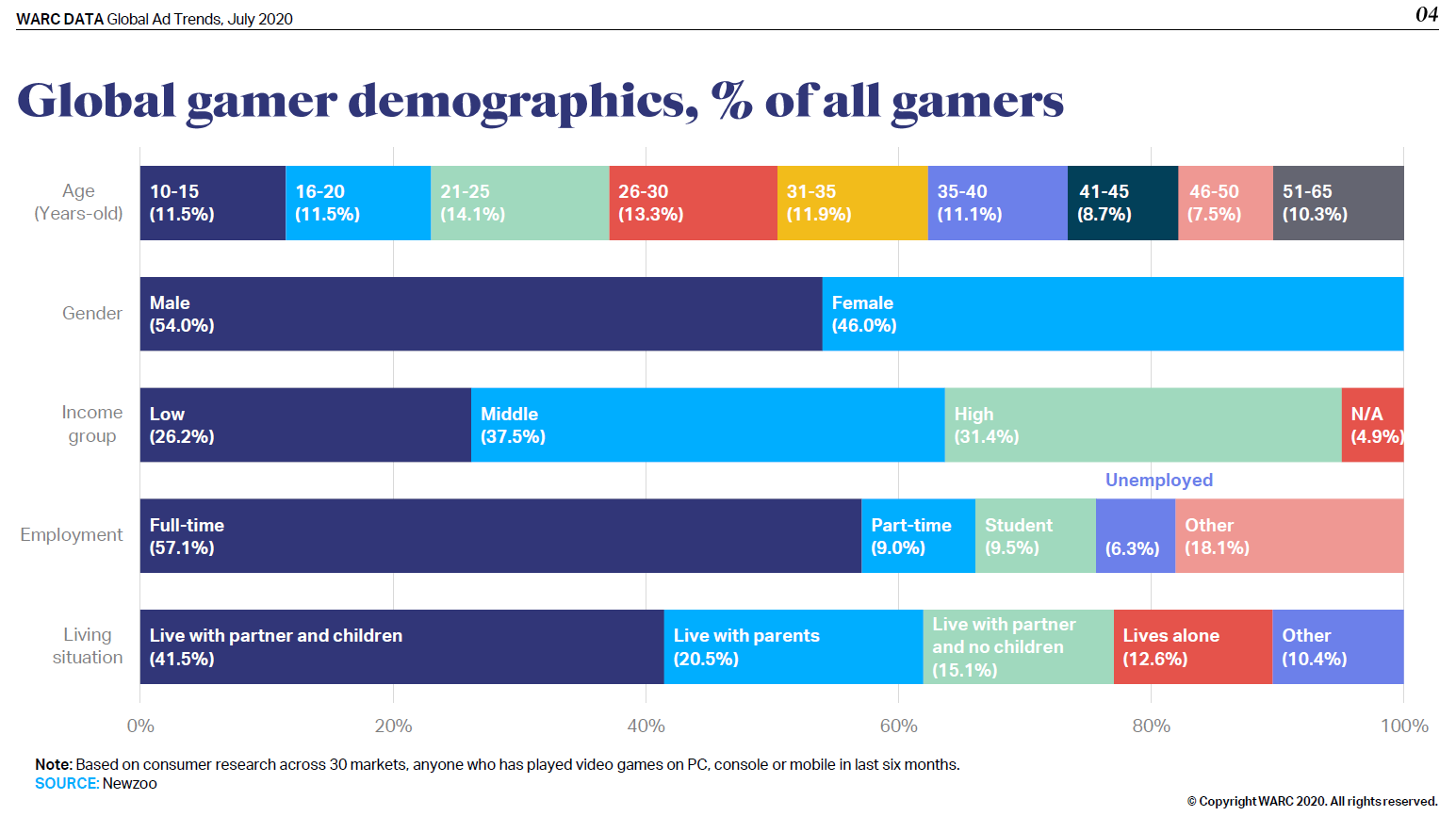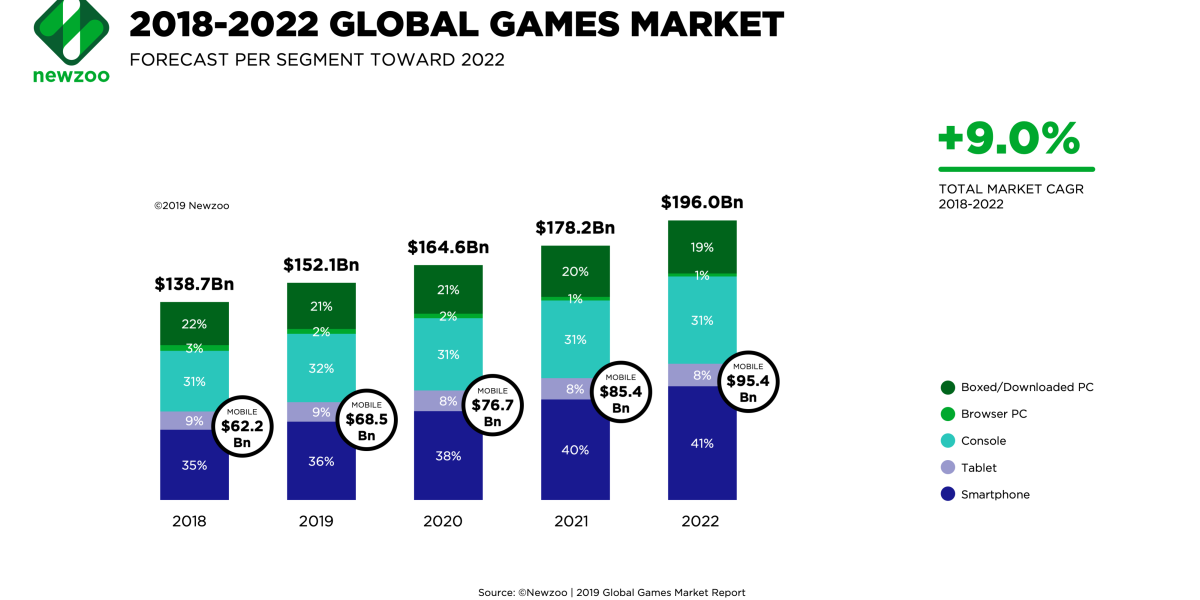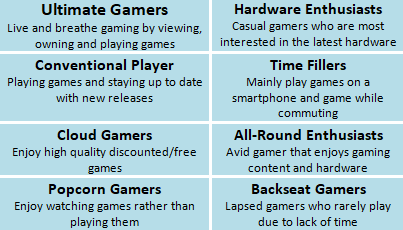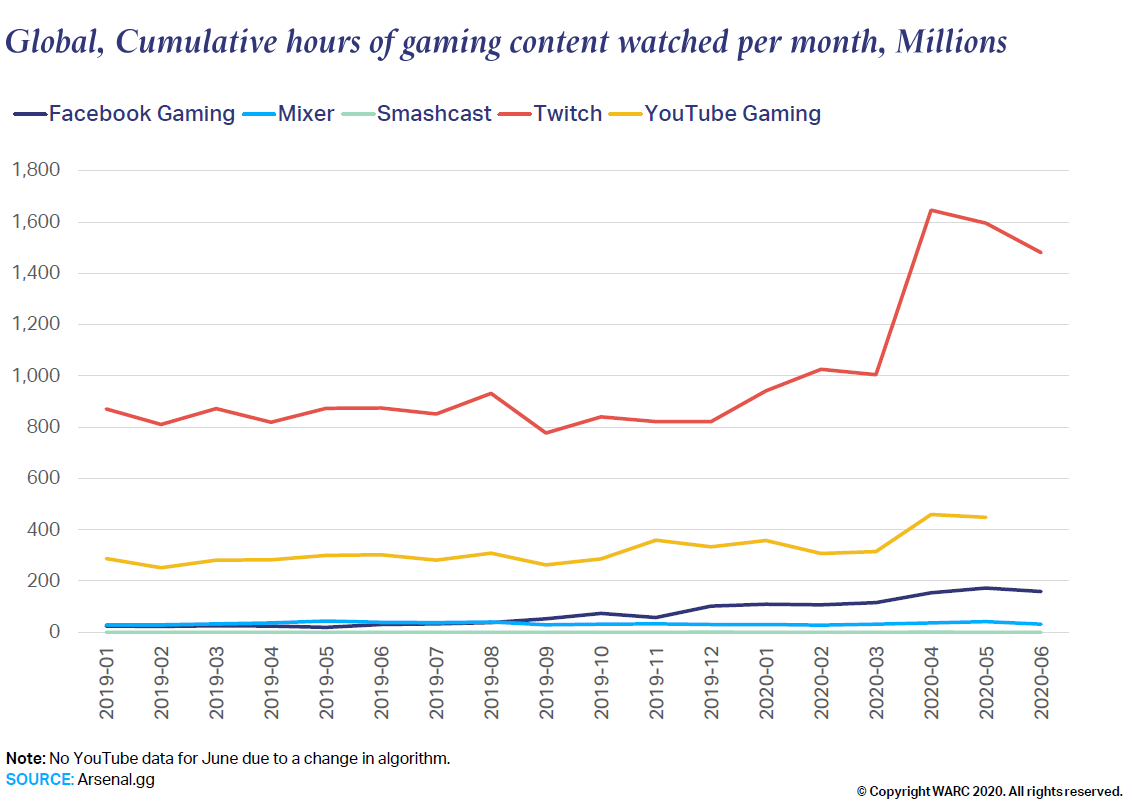The last few months have been challenging to say the least and even though the world is starting to open up, our newly formed habits and hobbies may be here to stay. One of the main things that lockdown has taught us is to make use of what you have in your immediate vicinity, be it becoming a skilled baker, fitness expert or a gaming pro.
A number of different verticals have seen an increase in popularity over the last few months, gaming being one of them. In fact, Google has noted an increase in search activity around gaming with a 100% increase year on year for the ‘best online games’ search term.
So with gaming continuing to increase in popularity, how do we apply this to our future campaigns and brand strategy? In this blog I will look at why gaming has skyrocketed, how fragmented the gaming space is, and how brands and advertisers alike can tap into this audience.
Why Gaming?
The increase in gaming over the last few months is not by chance, but a result of the many benefits it can bring to people in lockdown. Not only does gaming offer a distraction, it also offers a way to stay connected with friends. This duality between entertainment and socialising is the perfect combination and addresses two of the key areas lacking during lockdown.
Another key reason is accessibility. Gaming is an overarching category that encompasses a number of different platforms, software and devices. It can range from playing Candy Crush on your phone to Call of Duty on a high-end PC, and it’s this range and diversity that has allowed the gaming industry to flourish under the current circumstances.

(Source: WARC DATA, Global Ad Trends, July 2020)
The bar chart above showcases the demographics of gamers over the last six months. Interestingly we can see a pretty even distribution of gamers across all ages, with a slight peak in the 21-25 category. The split in gamers across the above demographics shows how truly multi-faceted the gaming vertical is.
Although we have seen gaming popularity skyrocket in the last few months, it was already seeing growth over recent years due to increased accessibility. In fact, between 2018 and 2019 the gaming industry saw a 9.6% growth in market revenues.

(Source: Newzoo, 2019)
The graph above showcases the forecasted growth in the global gaming market. We have seen the largest increase in mobile gaming; with an increase of 3% from 2018-2020, highlighting that although gaming is an overarching industry, mobile gaming is proving to be the most accessible form for consumers.
The audience
What makes the gaming vertical so unique is that it is fragmented in how and where gamers consume their content. The gaming audience comprises of many types of personas with different habits and behaviours. Generally, we can categorise users into one of eight segments:

All of the above personas enjoy consuming gaming content, but in different ways across a variety of mediums. These personas should be taken into account when planning campaigns in order to maximise performance and reduce wastage.
We are seeing an increase in ‘popcorn gamers’ which are users that prefer to watch video games rather than play them. This is one of the fastest growing segments and is highlighted by growth from streaming platforms such as Twitch and YouTube. In fact, the live streaming sector grew by 45% between March and April 2020.

(Source: WARC Data, Global Ad Trends, July 2020)
The graph above showcases the number of gaming hours consumed throughout the year so far, split by platform. The most sizable increase was across Twitch, which saw a significant jump in hours consumed between March and April 2020. This large jump in consumption lines up with lockdown restrictions across the world, highlighting a change in user behaviour.
How can we reach these users?
The line-up of personas above illustrates the fragmentation of the gaming space; therefore a tailored approach is beneficial to reach these audiences.
For example, ‘popcorn gamers’ love to watch games, so these users will be easiest to reach on streaming or content sharing platforms such as Twitch or YouTube.
‘Ultimate gamers’ and ‘conventional players’ can be reached by a number of means. Both of these personas spend hours playing video games so it can be beneficial to target these users in a highly engaging environment, such as in game. In the early stages of lockdown, Codemasters, the developer of the racing game Dirt Rally 2.0, and Bidstack, an in-game advertising specialist, partnered to bring stay at home messaging to gamers. This messaging highlighted the importance of ‘Stay Home, Save Lives’, and delivered the messaging seamlessly into the game. This is a strong example of how in game messaging can be leveraged to raise awareness across an engaged audience.

(Source: Autosport)
Other personas such as the ‘Time Filler’ can be reached by other means. As we know this segment generally plays games on mobile devices on the go, we can leverage in app games advertising to raise awareness to these users.
Hardware enthusiasts may be best reached across relevant contextual content around the latest hardware releases. These users can also be reached through Verizon’s first party purchase receipt data, which will allow us to target users who have recently purchased gaming hardware.
Endgame
Overall, the gaming space has experienced long-term and short-term change with increased accessibility of mobile gaming and social distancing. Although this vertical has shown increased growth, it is important to understand the many personas within the gaming vertical and how content is shared and consumed. This also highlights that the ‘one size fits all’ strategy may not be the most viable and that a tailored approach should be considered.
Gaming offers something different to everyone, be it an immersive single player experience, watching your favourite streamer online, or playing Candy Crush on your way to work. With the above in mind, brands and advertisers have the ability to unlock a highly engaged audience right at their fingertips.






